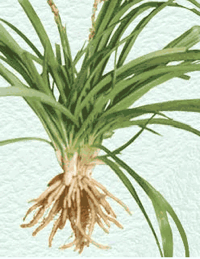Catching up with some old friends in Nairobi last week I found out that one of them has been involved in preparing a really wonderful “Herbal and Nutritional Guide for Kenyan Families” for an NGO called the Trust for Indigenous Culture and Health. According to its mission statement, TICAH works “to strengthen our understanding of the positive links between cultural belief, practice, and knowledge and the attainment of health.”
A tale of three (illicit) crops
Still not online here in Nairobi, but listening to the BBC World Service on the radio, I was struck by two (sort of linked) stories. One said that marijuana is now the biggest cash crop in the USA. The other was about coca in Bolivia and how the new president of that country, Evo Morales, is suggesting that cultivation of the crop should be expanded and new products developed based on the traditional uses of the plant. Then in the Daily Nation this morning there is an article about how miraa (or qat, Catha edulis) farming is taking a hit in northern Kenya after miraa flights to Somalia were banned by the new authorities there. Now livelihoods are threatened and there is apparently an upsurge in crime in miraa growing areas. Anybody out there want to draw some conclusions?
Tidings of discomfort and sorrow
Frankincense — traditional gift at this time of the year — is the resin of a tree called Boswellia papryrifera native to the Horn of Africa. Alas, a scientific study in the Journal of Applied Ecology proves that tapping the tree for resin decreases the number of flowers and seeds the tree produces, thus “potentially” harming the regeneration of the frankincense woodlands. Non-tapped trees produce three times more seeds than tapped trees, and those seeds are five times more likely to germinate. The authors say that collectors should make fewer taps per tree and allow long rest periods with no tapping.
Vitality herbs a big draw
 DailyIndia.com reports that “vitality herbs” were the biggest attraction at a recent National Forest Expo in Bhopal, India, and we do not shirk our duty to bring you edited highlights across the entire range of agricultural biodiversity. Will the Indians harvest their herbal Viagras sustainably? Hardly matters; one that caught my eye, because I recognized the Latin name of the common spiderplant of a thousand windowsills, is Chlorophytum borivilianum and it is already being domesticated and grown commercially.
DailyIndia.com reports that “vitality herbs” were the biggest attraction at a recent National Forest Expo in Bhopal, India, and we do not shirk our duty to bring you edited highlights across the entire range of agricultural biodiversity. Will the Indians harvest their herbal Viagras sustainably? Hardly matters; one that caught my eye, because I recognized the Latin name of the common spiderplant of a thousand windowsills, is Chlorophytum borivilianum and it is already being domesticated and grown commercially.
Picture from http://www.allayurveda.com/.
Protecting TK
There seems to have been a breakthrough – procedurally at any rate – at the WIPO discussions in Geneva on protecting traditional knowledge, folklore and expressions of culture (genetic resources are also on the table). Meanwhile, in Abuja, the Nigerian president Olusegun Obasanjo has launched a committee to boost research on traditional medicine.